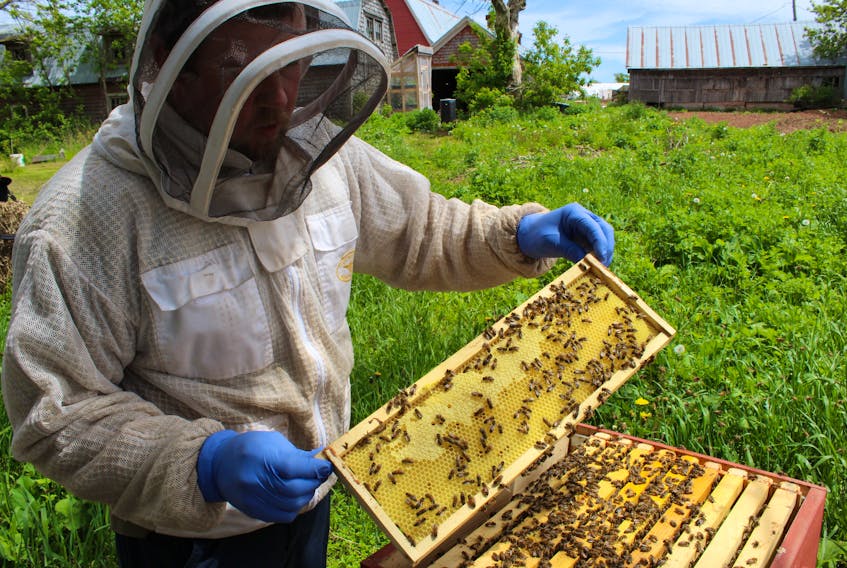A construction company renovating a home in Hamilton, near Malpeque, last week got an unexpectedly large surprise when they started work in the attic.
They found what turned out to be a large honeybee hive, which stretched from the attic floor down into a wall on the second storey.
They originally thought the insects were hornets and called a pest control expert. When the exterminator saw they were in fact honeybees he recommended they find themselves a beekeeper to remove them alive.

They called James MacLean of Island Blend Farms of Southwest Lot 16.
The farm raises Holstein dairy cattle, but MacLean took an interest in beekeeping a few years ago and has been raising a handful of hives for about a year.
“I can't really put a finger on what I like so much about bees. I enjoy seeing their progress in the hives and helping them out where I can,” he said.
“They are simply a fascinating creature to watch.”
When MacLean got to the house, he quickly discovered the bees in the attic were the tip of an iceberg.
“Once I got down a little further I realized it was a lot bigger than everybody thought it was. So I had to go cut into the wall and get them out that way,” said MacLean.
He ended up having to cut a large hole in the interior wall, which revealed a sizable bee hive. He estimated it was about three feet wide by three feet long and the comb was almost a foot thick.
In the wild, bees build their hives directly into larger structures like tree hollows or other nooks and crannies.

Cameron Menzies, P.E.I.’s provincial apiarist, said bees do occasionally set up shop in residential properties, but it is more common further south, such as the U.S. Bees find homes attractive because they are heated through the winter, which helps the colony conserve energy and survive.
The home in question had been unoccupied for about two years, and MacLean guessed by the size of the hive the bees probably moved in shortly after the people moved out.
He spent two days (he was joined on the second day by his brother, Curtis,) slowly removing the bees using a process called a cutout. It involves removing comb from the wild colony and using rubber bands to transplant it into a frame. That frame is then placed with others in a hive box, which the beekeeper can then take home. If all goes as planned, the bees that were on the transplanted comb will hatch a new queen and form a new colony.
MacLean said he took away one full colony plus another two proto-hives, which are smaller and should eventually hatch a queen.
It was a good haul and a great learning experience, said MacLean, as it was a first for him.
He’s quarentined the new hives from the old ones for the time being, but will eventually move them together.
MacLean will be posting updates on his Facebook page: https://www.facebook.com/islandblendfarms.
@JournalPMacLean










